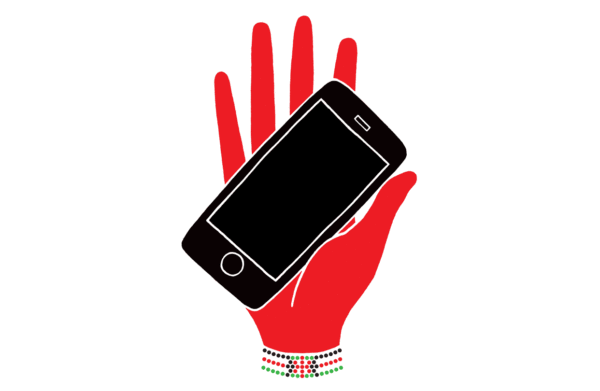
Mobile Banking Gives a Big Boost To Kenya’s Poor
By Melvin Konner for The Wall Street Journal
Globalization and unrestrained technological change have plenty of critics, as the election in November amply showed. Many of my fellow anthropologists say that the positive effects of these twin trends have greatly benefited China but have left behind most of the global poor. A study conducted in Kenya and published in the journal Science in December tells a different story.When I first visited Kenya during my travels in Africa in 1969, extreme poverty was common. The population has quadrupled, and the contrasts remain: In 2011, one in four Kenyans lived in extreme poverty, defined as spending $1.25 a day or less. By several measures, women are financially worse off than men.
This is changing, however, and the new study points to one reason why. In yearslong research gathering data on 1,600 households, economists Tavneet Suri of the Massachusetts Institute of Technology and William Jack of Georgetown University found that one innovation had an outsize impact: mobile banking. Extrapolating to a nationwide level and controlling for other relevant factors, the researchers estimated that between 2008 and 2014, access to M-PESA (Swahili for “mobile money”) lifted at least 194,000 Kenyan households out of extreme poverty.
Raised in Kenya, Dr. Suri attended Cambridge and Yale on her way to MIT. But this was no one-way journey. She spends months every year studying ways to help alleviate the poverty of her fellow Kenyans.
Mobile phones have made it possible for poor countries to skip having to build a complete landline network. Now residents are skipping traditional banks, too. In the past decade, mobile money has reached 96% of Kenyan households, with 110,000 “agents” across the country operating from small kiosks (an average 0.9 mile from clients, as opposed to 6.2 miles for banks). There, physical cash can be deposited and withdrawn. Once you have made a deposit, you can spend the money almost anywhere. “Think of it as a debit card,” Dr. Suri told me (from the Nairobi airport, on a mobile, of course). You can transfer money to relatives, make informal loans and share investments without cash. It improves “financial resilience.”
She stressed “the distance component,” saying that mobile lets you “create relationships with people who are much farther away.” The average transaction is between people 120 miles apart, a $5 bus ride away if you have to deliver the cash in person. That’s a huge amount for most Kenyans and a big disincentive for small transactions.
When Dr. Suri’s former research manager—one of his father’s 22 children by four wives—wants to help his mom, he sends money with a few clicks from his phone to hers. This reflects another important result: The researchers aren’t sure why, but mobile banking mainly affects women, especially the poorest. The Suri team estimates that it “induced 185,000 women to switch into business or retail” from farming; women also increased saving.
This liberates them in a man’s world and allows higher-risk, higher-gain choices. Microloans—small-scale loans that were much touted 10 or 20 years ago—have proved disappointing for women’’s progress, partly because men grabbed the cash. That can’t happen when there is no cash. Women’s phone transactions are their own. In six years, mobile banking reduced extreme poverty in female-headed households in the sample to 36% from 43%. Household size fell—possibly, the researchers say, because more children were in boarding schools, a common educational choice in Kenya. More control over money by Kenyan women also seems to mean more schooling for their children.
Dr. Suri’s team is completing similar studies in Tanzania and Uganda, which have also been adopting mobile banking. Referring to the decision to study M-PESA, she adds of her team, “We made a bet in 2008…. It was high-risk, high-return”—just like the entrepreneurial spirit of her subjects.
First appeared at WSJ





